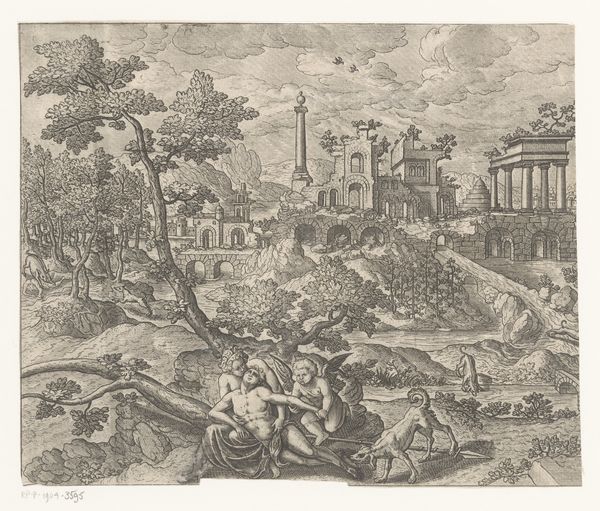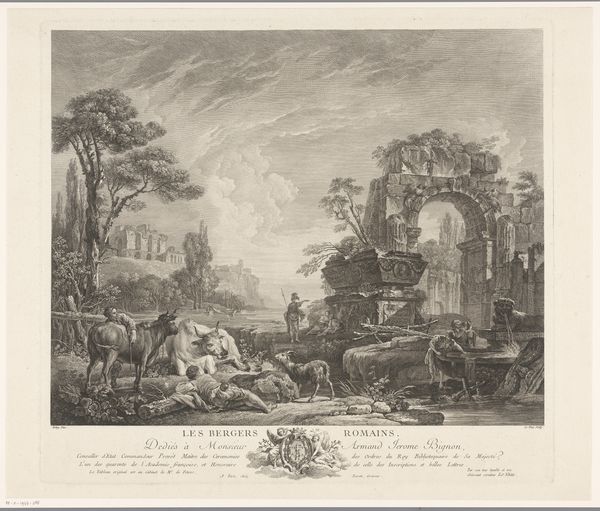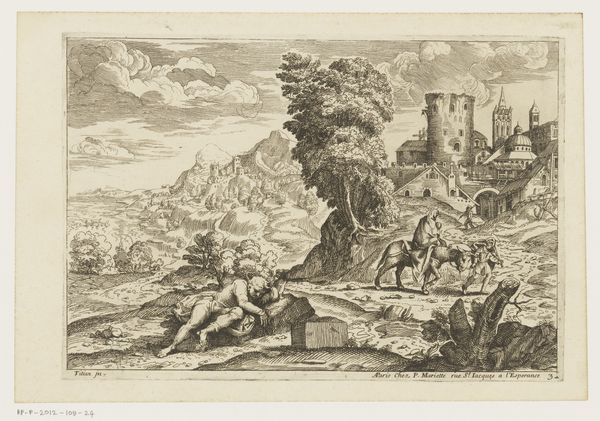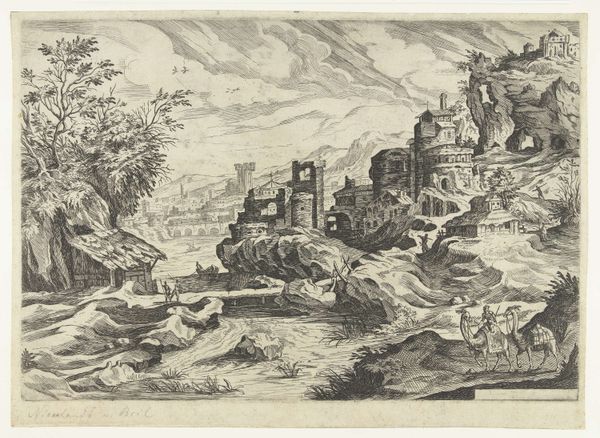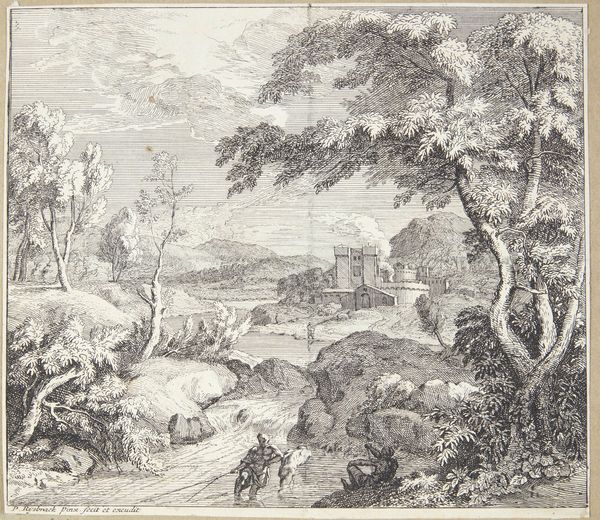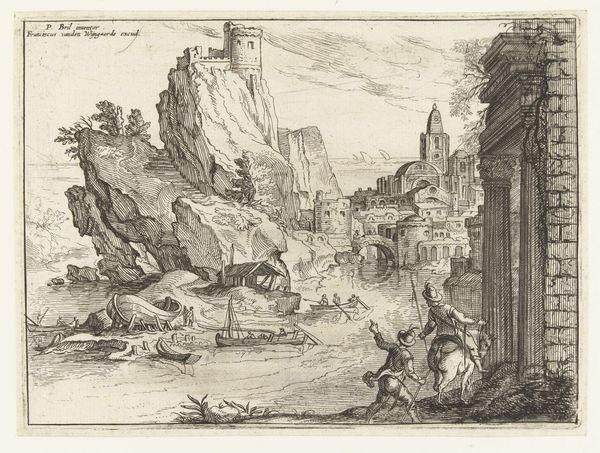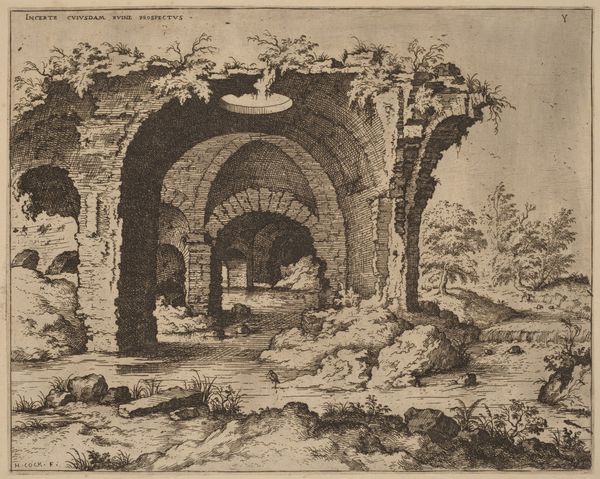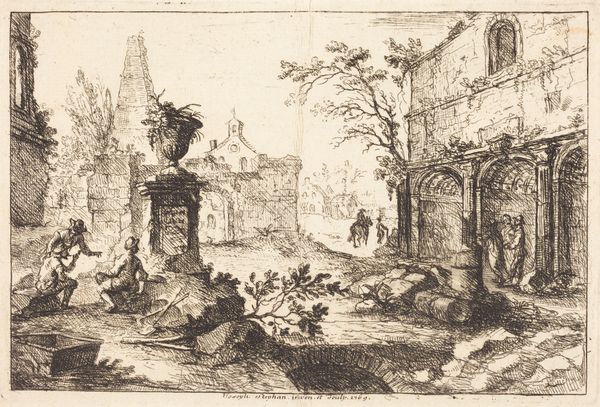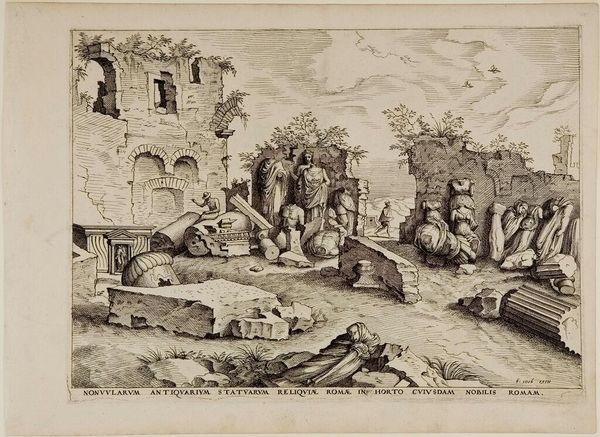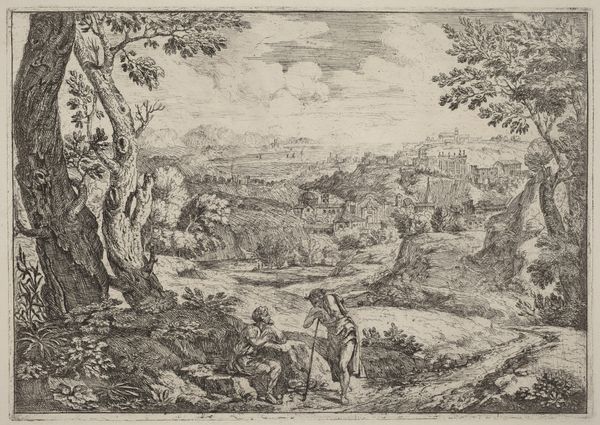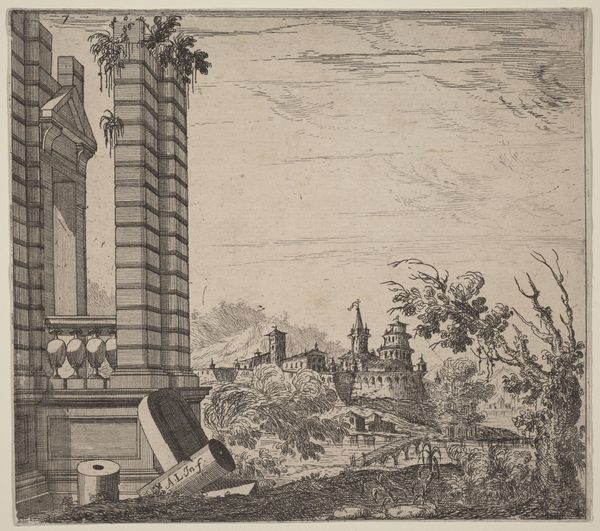
print, etching
#
ink drawing
# print
#
etching
#
landscape
#
genre-painting
Copyright: National Gallery of Art: CC0 1.0
Jan Smees created this etching of a Sleeping Shepherd sometime in the early 18th century. Smees's image evokes a romantic vision of the past, a common theme in European art of this period. Dutch artists had long been interested in landscape, but this image moves beyond simple representation. We see idealized Roman ruins inhabited by a shepherd and his flock. This is Arcadia, a mythical place of pastoral peace. By the 1700s, wealthy landowners across Europe were building follies - mock Roman ruins - on their estates. These follies were a way of displaying classical learning and taste, but also of connecting themselves to a glorious past. They were potent symbols of power and authority. The sleeping shepherd here is an interesting figure. Is he simply part of the scenery, or does his presence represent a kind of claim to this landscape? Art historians rely on a variety of sources to better understand the meanings of such works, including estate inventories, garden design plans, and literature. The history of art depends on understanding its wider social and institutional context.
Comments
No comments
Be the first to comment and join the conversation on the ultimate creative platform.
